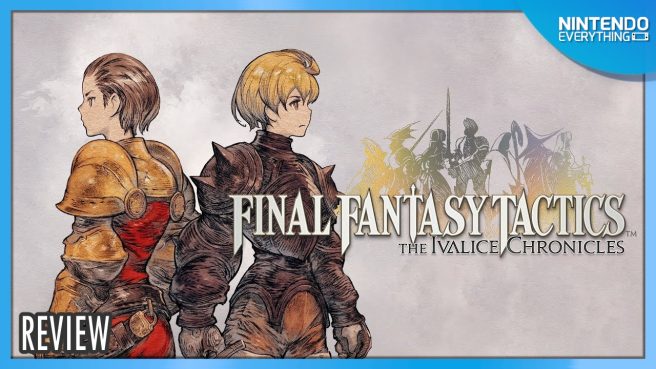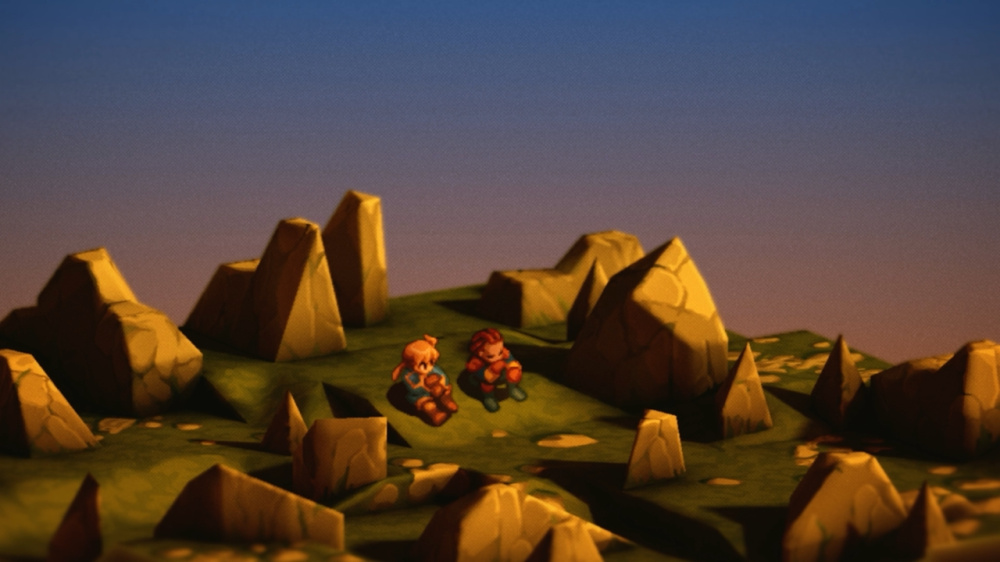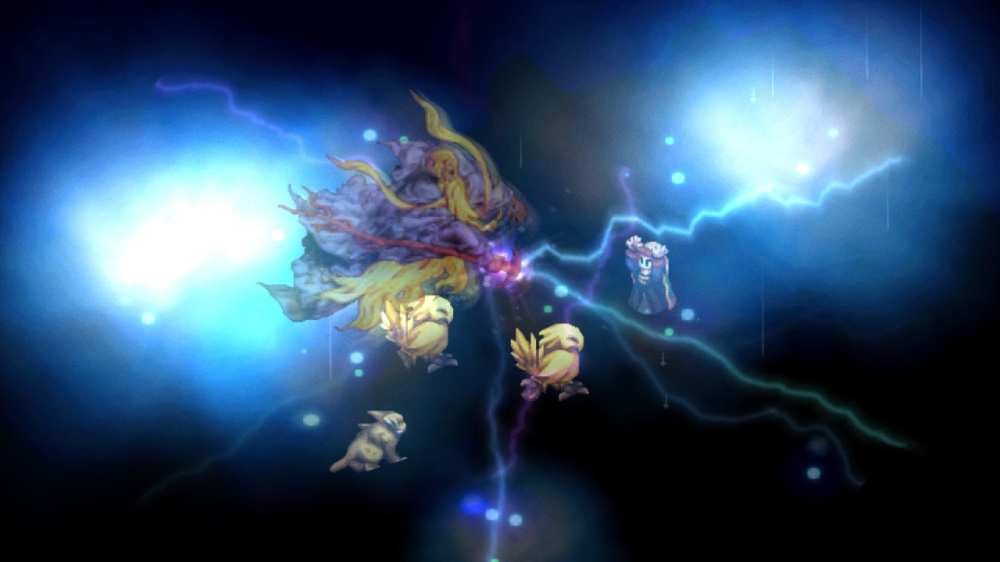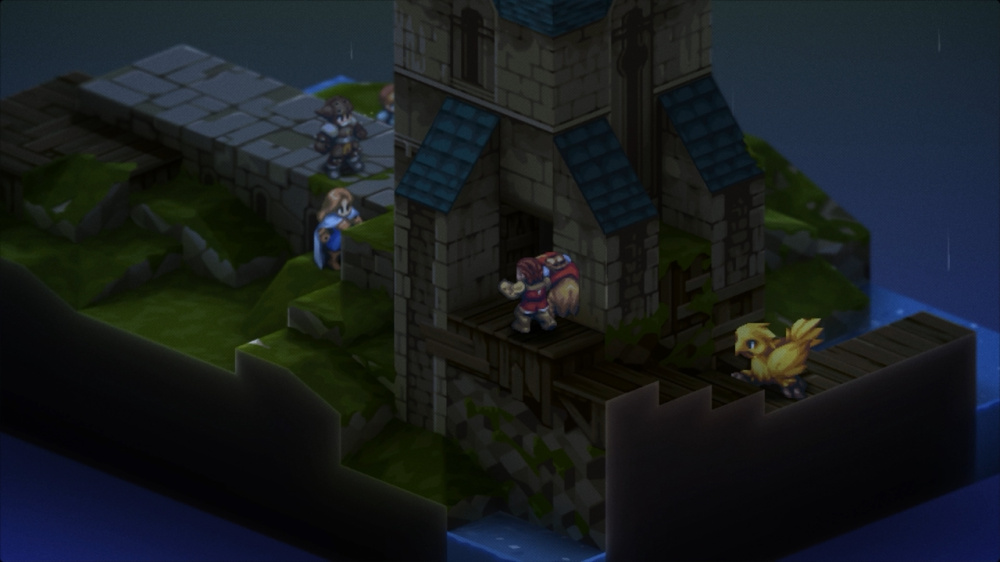Final Fantasy Tactics: The Ivalice Chronicles review for Nintendo Switch
System: Switch 2, Switch (reviewed)
Release date: September 30, 2025
Developer: Square Enix
Publisher: Square Enix
It has been more than twenty-five years since Final Fantasy Tactics first landed on the original PlayStation, quietly establishing itself as one of the most influential tactical RPGs ever made. While its initial release was overshadowed by the mainstream success of Final Fantasy 7, the game steadily built a reputation as a genre-defining classic. Now Square Enix has brought it back with Final Fantasy Tactics: The Ivalice Chronicles, a rerelease that preserves the essence of the original while finally delivering content that western audiences never had access to. The timing is no accident. Tactical RPGs are enjoying renewed popularity, and Square Enix appears to recognize that players – both veterans and newcomers – are ready to experience adventure in Ivalice once more.
The narrative of Tactics follows a knight cadet named Ramza Beoulve, a young nobleman who becomes entangled in a web of political intrigue, betrayal, and war. The story is layered, often dense, and strikingly mature, but it succeeds because it grounds its conflicts in human motivations: ambition, loyalty, and the cost of survival in a world where those in positions of power are doing everything they can to claw back more of it, everyone else be damned.
Yet for all its narrative ambition, the gameplay is where Final Fantasy Tactics shines. Battles play out on isometric, grid-based maps that reward foresight, careful positioning, and a willingness to adapt on the fly. Every move matters. Controls in this rerelease remain intuitive, with speed-up features available in battle, automation through AI controls, and the ability to skip cutscenes should you wish it. The story’s pace is deliberate but never plodding, giving players time to plan while keeping the tension high. Few RPGs can match the sense of triumph that comes from turning a desperate encounter into a hard-fought win. It’s the tactical planning itself that really hooks you.
Do you push a unit forward to seize an opening and bait enemies closer so you can release a barrage of magic onto their unit? Do we hang back, buff up first, and then go in with double swords to slice and dice our way to victory? You could do both actually, and its better if you do. You can build a character into almost anything you want them to be. The job system remains the crown jewel of Tactics, and its flexibility is as engrossing today as it was in 1998. Characters can freely swap between roles, carrying over abilities from one class to another, which opens the door to experimentation and creative team-building. The results can be devastating – a dual-wielding ninja can dismantle nearly any foe – or you can go for the delightfully absurd. A chemist with teleportation powers or a monk who doubles as a spellcaster aren’t just possible, they’re often viable. Even unorthodox teams, like a squad of bards and dancers whose performances slowly shift the tide of battle, prove that success isn’t always about raw efficiency, sometimes it can be carefully planned with numbers, or pried from the enemy through sheer luck when a build turns out to be nonviable (oops!).
Among the many standout jobs, Geomancer deserves special mention for being both versatile and surprisingly self-sufficient. Its abilities are instant-cast, faith-independent spells that deal modest area damage while carrying a chance to inflict debilitating status effects. Because the damage scales equally from both physical and magical stats, Geomancer fits seamlessly into nearly any build, whether as a main class or a secondary skillset. It also boasts solid growths, access to excellent gear, and one of the most entertaining reaction abilities in the game: Counter Flood, which can trigger off a wide range of attacks and occasionally turns the tables with a status ailment. While Geomancy won’t win battles through raw damage alone, it excels as a tactical tool—softening enemies, interrupting casters, or simply giving your characters something useful to do between big actions. Paired with physical classes like Knight or Dragoon, it adds much-needed ranged utility; with magical jobs like Priest or Summoner, it provides cheap, instant offense to complement slower, mana-hungry spells. The result is a class that rarely has a wasted turn, and often ends up being one of the most quietly indispensable members of any party. I also admit that I might be biased: its my favorite Final Fantasy job class.
What makes this system so enduring is its invitation to experiment. Players can build parties that reflect their playstyle – carefully optimized, wildly impractical, or somewhere in between—and still find ways to make them work. The sense of ownership over your team is unmatched, and it keeps the loop of combat and progression endlessly rewarding. Taking your team in alongside Ramza and uncovering the secrets of the truth behind the powers that control Ivalice isn’t always easy, even with a good composition. Boss fights and story progression will still surprise you way more than grinding random monsters on the world map (which looks way more in line with later titles now; neat!).
The Ivalice Chronicles balances preservation with refinement. Character portraits retain Akihiko Yoshida’s iconic art direction, while battle maps benefit from increased resolution and subtle polish. The game still feels like the Tactics fans remember, but it presents itself with a clarity more suited for modern screens. Voice acting has also been expanded, giving weight to pivotal story moments without them being too overbearing. I felt the new life in key scenes right away, deepening the impact of betrayals and shifting alliances. The script has been entirely redone, though pushing the same story you’ll find that dialogue is entirely different, but in a way that flows more naturally. Perhaps the most meaningful addition is the inclusion of lore that was once exclusive to Japanese releases. These details strengthen connections across the Ivalice Alliance, tying Tactics more closely to games like Final Fantasy 12 and the lesser known Vagrant Story. For longtime fans, it feels like pieces of the puzzle have finally been put into place for those of us who fell in love with the country of Ivalice as a setting.
What makes The Ivalice Chronicles more than a mechanical masterpiece is the way its story still resonates today. Ramza’s journey is not one of destined heroism but of disillusionment – a young man discovering how corruption and inequality erode the very ideals he hoped to uphold. The narrative is immersive because it reflects truths that remain relevant: the cost of unchecked ambition, the fragility of justice in the face of power, and the voices lost in systems designed to favor the privileged. While wrapped in fantasy trappings, these themes feel strikingly modern and can even be seen by people the world over in their every day lives. The story that Ramza is fighting through is one that anyone who has fought for an ideal can understand.
On the surface, Tactics is a game about war and betrayal. But beneath its conflicts lies a quieter message about unity. Ramza’s refusal to abandon those cast aside by society is not simply noble; it is necessary. His choices highlight the strength found in solidarity and the importance of empathy in a fractured world. This is a lesson worth carrying forward. Division, whether political, social, or personal, can erode communities. But as Tactics suggests, real strength comes from connection—from listening, from understanding, and from standing with others even when it is inconvenient or costly. The game’s battles are often won through teamwork, and its story carries the same truth: survival depends on cooperation. It is a message that extends well beyond Ivalice.
Final Fantasy Tactics: The Ivalice Chronicles succeeds not just as a rerelease but as a restoration. It preserves the storied and whimsical brilliance that made the original a classic, enhances it’s charms with thoughtful refinements, and enriches the immersion with long-missing lore. For series fans, it is the definitive version – a chance to revisit Ivalice with fresh eyes and long-requested context. For newcomers, it is the perfect opportunity to experience one of the genre’s cornerstones, complete and accessible for the first time. My overall impression is one of excitement. This release ensures that a new generation can step into Ivalice – to experiment with its job system, to appreciate its art, and to wrestle with its themes of power and responsibility.
Some games endure because of nostalgia. Others endure because they still have something meaningful to say. Final Fantasy Tactics is the latter, and The Ivalice Chronicles makes that message more accessible than ever: We have to work together if we want to see things improve. Even if we don’t agree on everything, being able to deliberate and work together gets us much further than doing nothing at all.
Final Fantasy Tactics: The Ivalice Chronicles copy provided by the publisher for the purposes of this review.




